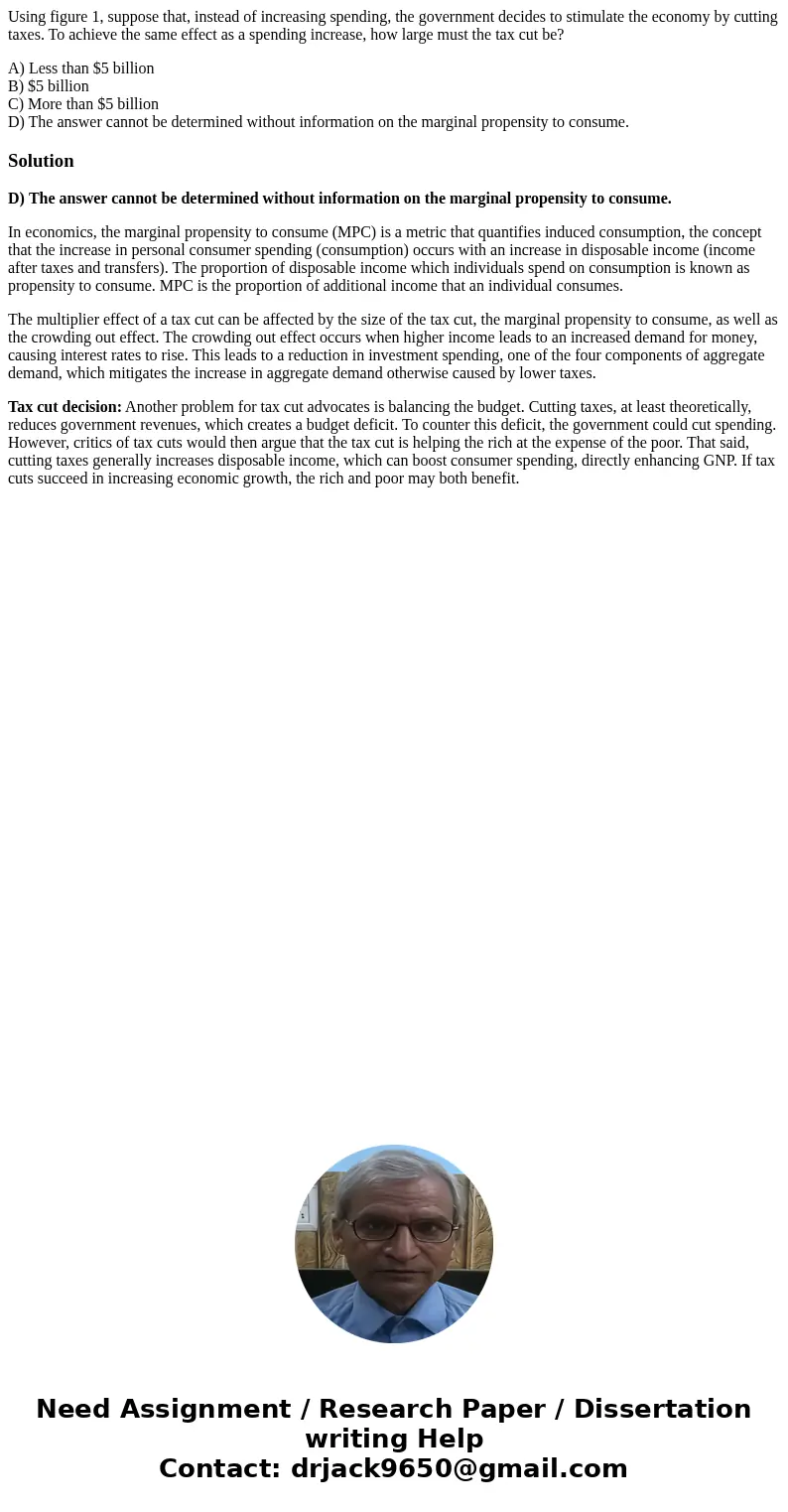Using figure 1 suppose that instead of increasing spending t
Using figure 1, suppose that, instead of increasing spending, the government decides to stimulate the economy by cutting taxes. To achieve the same effect as a spending increase, how large must the tax cut be?
A) Less than $5 billion
B) $5 billion
C) More than $5 billion
D) The answer cannot be determined without information on the marginal propensity to consume.
Solution
D) The answer cannot be determined without information on the marginal propensity to consume.
In economics, the marginal propensity to consume (MPC) is a metric that quantifies induced consumption, the concept that the increase in personal consumer spending (consumption) occurs with an increase in disposable income (income after taxes and transfers). The proportion of disposable income which individuals spend on consumption is known as propensity to consume. MPC is the proportion of additional income that an individual consumes.
The multiplier effect of a tax cut can be affected by the size of the tax cut, the marginal propensity to consume, as well as the crowding out effect. The crowding out effect occurs when higher income leads to an increased demand for money, causing interest rates to rise. This leads to a reduction in investment spending, one of the four components of aggregate demand, which mitigates the increase in aggregate demand otherwise caused by lower taxes.
Tax cut decision: Another problem for tax cut advocates is balancing the budget. Cutting taxes, at least theoretically, reduces government revenues, which creates a budget deficit. To counter this deficit, the government could cut spending. However, critics of tax cuts would then argue that the tax cut is helping the rich at the expense of the poor. That said, cutting taxes generally increases disposable income, which can boost consumer spending, directly enhancing GNP. If tax cuts succeed in increasing economic growth, the rich and poor may both benefit.

 Homework Sourse
Homework Sourse